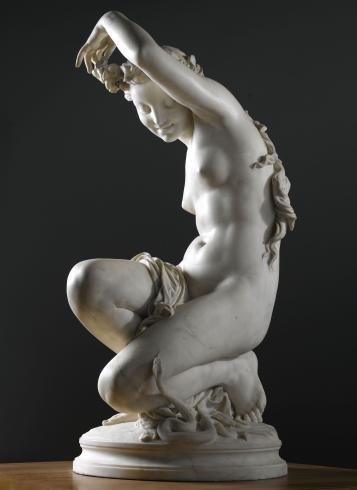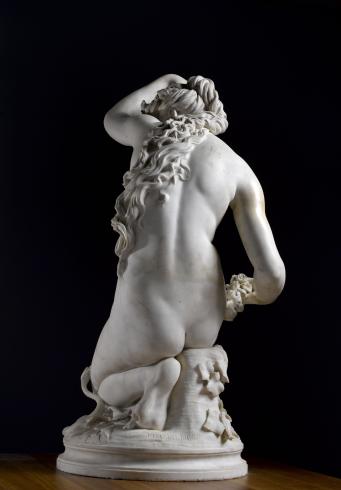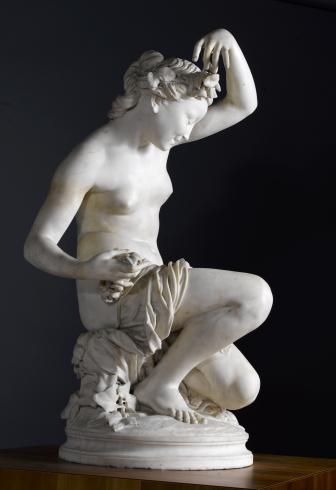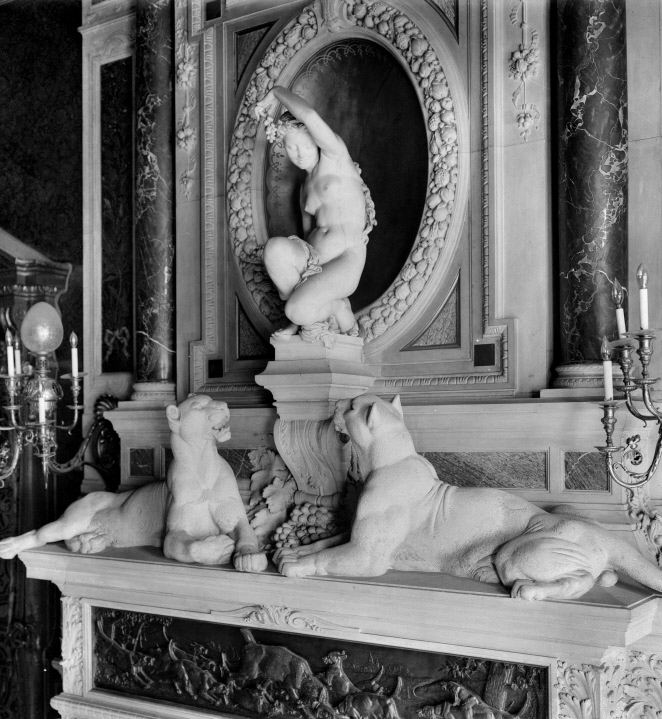 This marble statuette is one of the few works produced by Jules Dalou before his exile in England, at the time of the Franco-Prussian War in 1870. In 1864, at the age of 26, Dalou received his first significant commission for the décor of the Renaissance Revival townhouse of the Marquise de Païva, one of the most famous courtesans of the Second Empire. At the time, the sculptor was completing his long academic training, begun at the free school of design known as the “Petite École” (where craftsmen were trained), continued in the studio of the sculptor Jean-Baptiste Carpeaux, then at the École des Beaux-Arts in Paris, in the studios of Francisque Duret and Abel de Pujol. For this private house located on the Champs-Élysées, Dalou created several bronze door ornaments, stucco ceiling decorations, and an encrusted-enamel Bacchante providing the centrepiece of the dining-room fireplace.
This marble statuette is one of the few works produced by Jules Dalou before his exile in England, at the time of the Franco-Prussian War in 1870. In 1864, at the age of 26, Dalou received his first significant commission for the décor of the Renaissance Revival townhouse of the Marquise de Païva, one of the most famous courtesans of the Second Empire. At the time, the sculptor was completing his long academic training, begun at the free school of design known as the “Petite École” (where craftsmen were trained), continued in the studio of the sculptor Jean-Baptiste Carpeaux, then at the École des Beaux-Arts in Paris, in the studios of Francisque Duret and Abel de Pujol. For this private house located on the Champs-Élysées, Dalou created several bronze door ornaments, stucco ceiling decorations, and an encrusted-enamel Bacchante providing the centrepiece of the dining-room fireplace.
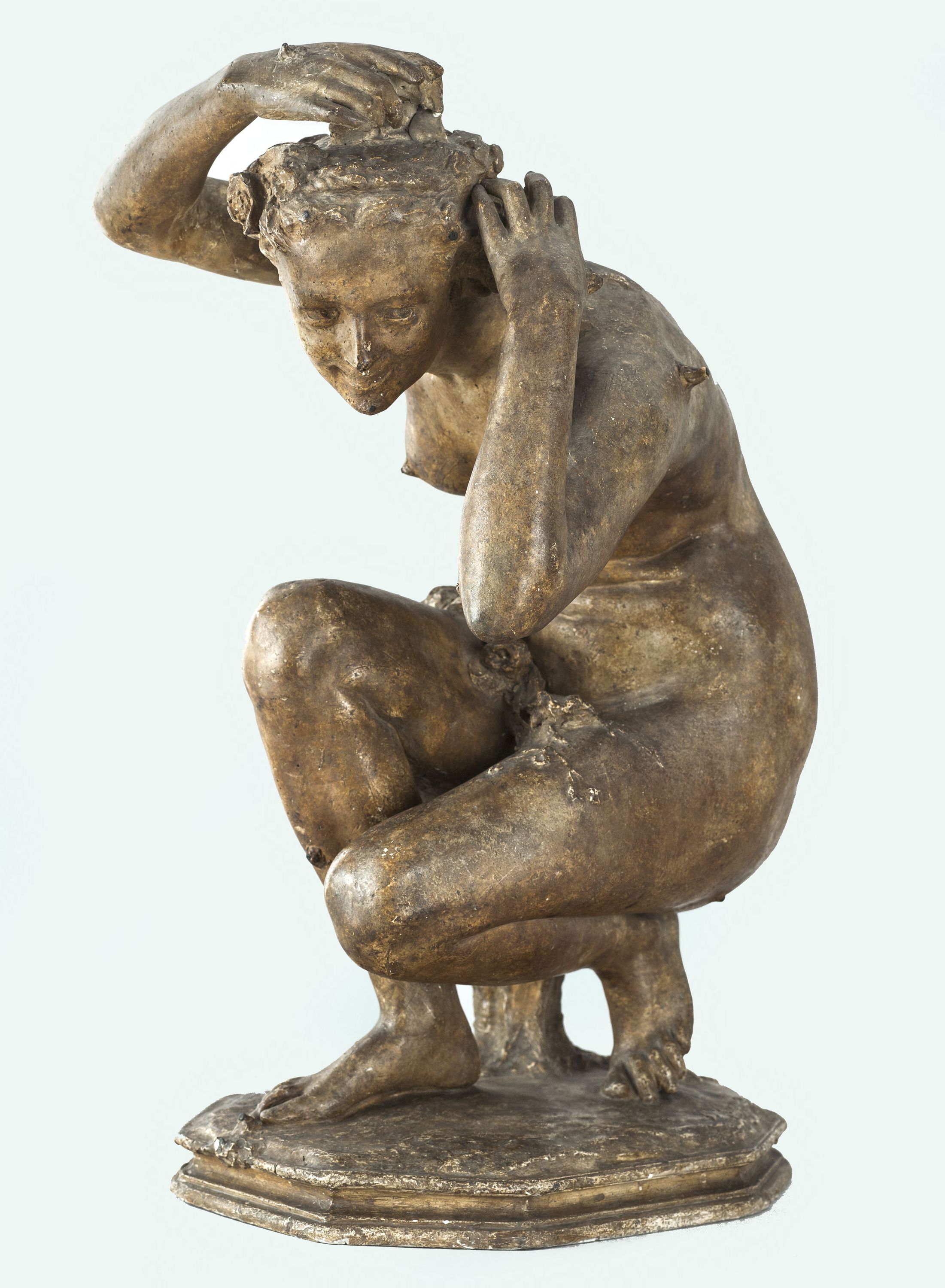 Dating from 1866, Eve constitutes a variation of the Bacchante at La Païva’s townhouse. This youthful work reveals the sculptor’s mixed influences: that of Carpeaux and that of academic models. Semi-kneeling in a gesture of modesty, arms and legs arranged in a gracious contrapposto, the work is directly inspired by the typical Crouching Venus found in ancient Rome. Only a small snake with coarse scales, coiled around the base, makes it possible to identify Eve. In addition, the figure’s lowered, smiling face appears to pay homage to the famous “smile” of Carpeaux, Dalou’s first master, to whom he always remained attached. As for the use of expensive and rare marble in Dalou’s work, it recalls his admiration for French 18th century sculpture, particularly the delicate art of Maurice Falconet. Although the destination of this statuette remains unknown, the Biblical subject, the choice of material, and the dimensions of the work indicate a private buyer.
Dating from 1866, Eve constitutes a variation of the Bacchante at La Païva’s townhouse. This youthful work reveals the sculptor’s mixed influences: that of Carpeaux and that of academic models. Semi-kneeling in a gesture of modesty, arms and legs arranged in a gracious contrapposto, the work is directly inspired by the typical Crouching Venus found in ancient Rome. Only a small snake with coarse scales, coiled around the base, makes it possible to identify Eve. In addition, the figure’s lowered, smiling face appears to pay homage to the famous “smile” of Carpeaux, Dalou’s first master, to whom he always remained attached. As for the use of expensive and rare marble in Dalou’s work, it recalls his admiration for French 18th century sculpture, particularly the delicate art of Maurice Falconet. Although the destination of this statuette remains unknown, the Biblical subject, the choice of material, and the dimensions of the work indicate a private buyer.
Lastly, this sculpture reflects the early stages of Dalou’s research on the female body. With the beautiful series of Female Bathers produced a few years later, the sculptor abandoned the smooth flesh and decorative posture of the young Eve for more well-rounded women’s bodies, more carnal skin tones, and a more realistic observation of feminine toilette.
H. D.
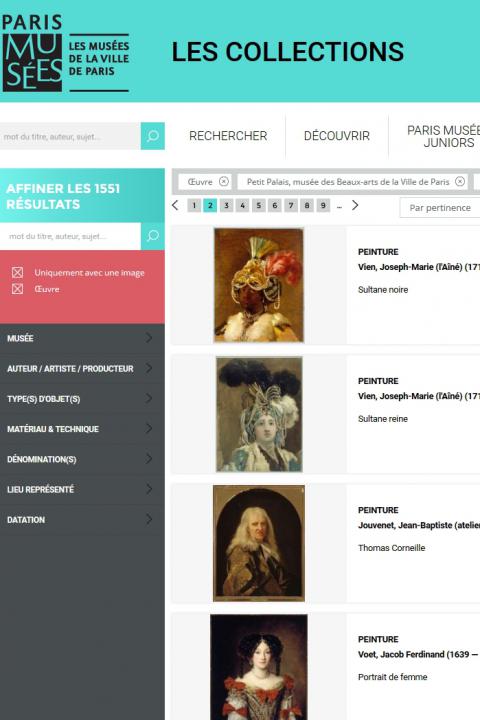
City of Paris municipal collection's website
The collections portal can be used to search the collections of Paris’s 14 municipal museums (approximately 336,000 works, including 43,000 belonging to the Petit Palais).
It is also possible to download around 12,000 images of the museum’s works free of charge.
Access the Museums of the City of Paris collections portal
Extern databases
Discover a selection of databases online presenting works from the Petit Palais or documents concerning the history of the museum.

